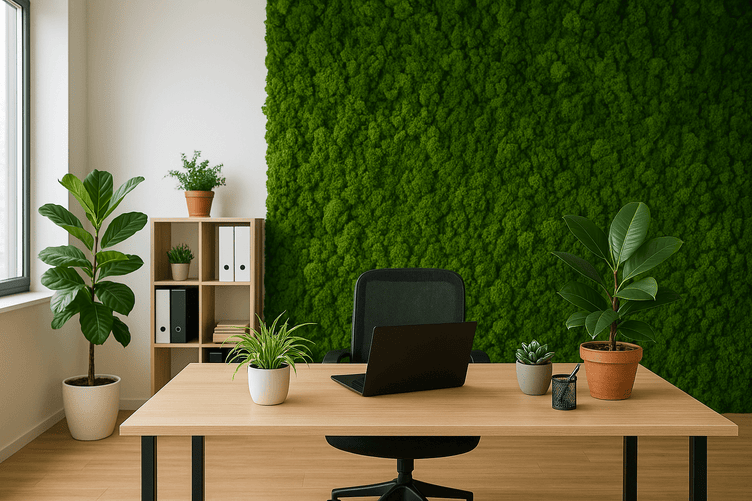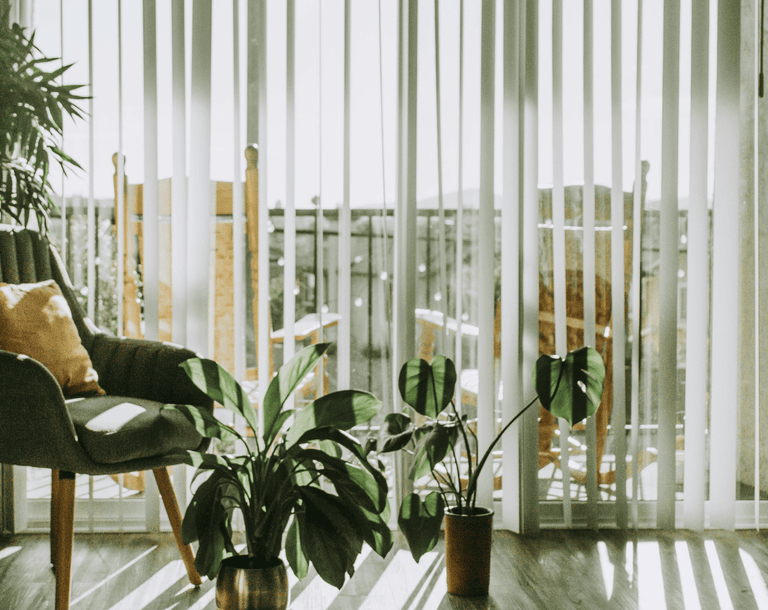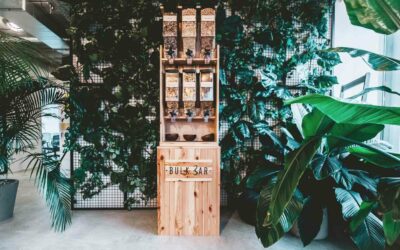In today’s modern offices, plants are no longer just decorative accessories. Their presence reflects a deeper focus on well-being at work, productivity, and thoughtful office design. Across cities from Paris to New York, more and more companies are adding greenery to their workplaces to create environments that feel vibrant, welcoming, and human. But what are the real benefits of plants at the office? And how can they be integrated effectively into the workspace? Let’s explore a growing trend that combines visual harmony, psychological balance, workplace well-being, and performance.
Science-backed benefits
The growing interest in office plants is not just a passing trend. Several scientific studies have highlighted their positive impact on workspaces.
One well-known study by Norwegian researcher Tove Fjeld found that office plants can reduce stress as well ass fatigue, headaches, and anxiety.
Meanwhile, research from Cardiff University revealed that offices with plants improved employee productivity by more than 15%. The study also noted higher engagement and job satisfaction when greenery was added to the environment.
Allies for a healthier workplace
Plants don’t just make offices look better: they actively contribute to a healthier indoor environment. Certain species, known as air-purifying plants, can absorb volatile organic compounds (VOCs) such as formaldehyde and benzene. Aloe vera, spider plants (chlorophytum comosum), and snake plants (sansevieria) are prime examples.
NASA research from the 1980s also showed that some plants release water vapor, improving indoor humidity levels—a benefit for both breathing and skin health. With the right plants, companies can create healthier, more comfortable workspaces.
Meeting the challenges of workplace well-being
Workplace well-being is now a central concern in HR strategies. Employees’ physical and mental balance plays a key role in collective efficiency and talent retention.
In this context, office greenery provides a simple, natural, and cost-effective solution to multiple challenges: reducing noise, improving visual comfort, creating a pleasant workspace, and even sparking creativity.
Some companies go further with green walls made of moss or foliage. These installations act as acoustic barriers, bring freshness indoors, and strengthen the connection with nature. Studies also show that indoor greenery can reduce noise pollution, improving concentration and comfort for teams.
Décor that shapes atmosphere
The office environment directly affects motivation and engagement. A thoughtfully designed workspace where people enjoy spending time fosters a positive atmosphere. Plants, whether lush green foliage or colorful blooms, add life and warmth to otherwise impersonal offices.
This ties into the concept of biophilia, our innate need to connect with nature. Bringing plants back into the workplace soothes tensions, creates a welcoming atmosphere, and strengthens employees’ sense of belonging.
Natural or artificial: what’s the right choice?
When there’s little natural light or limited time for maintenance, some companies turn to artificial plants. While they don’t offer the air-purifying benefits of real plants, they still enhance visual appeal and create a sense of well-being.
That said, nothing replaces the vitality of living plants. Watering,sometimes seen as a chore, can even become a calming ritual shared among colleagues. Low-maintenance plants like pothos, zamioculcas, rubber plants (ficus elastica), or spider plants are perfect choices for professional spaces.
Tips for adding plants to your office
1. Match plants to the space: small plants for desks, larger ones for lobbies or break areas.
2. Consider light levels: aloe vera or snake plants thrive even in low-light environments.
3. Plan for maintenance: outsource plant care or assign it to a team (which can also build team spirit).
4. Mix it up: combine potted plants, hanging greenery, green walls, or terrariums for variety.
5. Rotate plants: refresh certain varieties seasonally to keep the space visually engaging.
6. Think about watering needs: some plants require minimal care, while others prefer consistently moist soil. Choosing wisely means healthier plants and easier upkeep.
Conclusion
Office plants are far more than décor. They represent a holistic approach to workplace design and employee experience. By reducing stress, boosting concentration, enhancing company image, and improving workplace well-being, plants prove to be valuable allies every day.
Whether you lead a startup or a large corporation, don’t wait to bring some green into your workspace. In a fast-changing professional world, reconnecting with nature can make all the difference—for employees and for the organization as a whole.
Published on 27/06/2025












